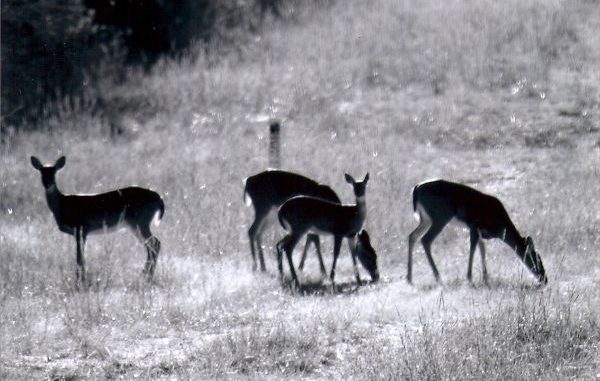
The reported deer harvest for the 2011 Deer Season will be the lowest on record, according to LDWF deer biologist Scott Durham.
The reported harvest from the deer-tag validation program is below that of past seasons, and totals from the DMAP and LADT programs are also low.
The abundant mast crop last year kept deer movement and hunter sightings lows — so low, in fact, that many are saying the population in the state has declined and are hoping LDWF will reduce some of the either-sex hunting days to see if deer numbers will begin to improve.
In the northwestern and western parts of the state, drought conditions during 2010 and 2011 may have had an impact on reproduction.
Does that are in poor physical condition simply are not as productive as the healthy ones. Research has shown time and time again that low body weights of does equate to low production. Physical stress from pregnancy and the subsequent care needed to put a new deer on the ground is tremendous, and adult does in poor condition simply will not be able to produce twins or even triplets.
I hunted in Bossier Parish last season on a tract of land that is pine dominant and harvested a 3 ½-year-old doe that might have weighed 90 pounds.
The doe had produced a single fawn in 2010 and 2011; no way a doe with that low of a body weight can adequately care and raise two fawns.
It was apparent from my observations that, in addition to the two years of drought, the deer density on this tract was too much for the habitat. Consequently productivity has to be low.
There are plenty of coyotes on this property, and these critters are being blamed all across the Southeast for declining deer numbers. No doubt there is probably some depredation going on here from the coyotes, but I think the other factors are of more concern.
I am talking with a lot of baby-boomer-generation hunters who have simply stopped pulling the trigger on deer and are content to just watch.
When the DMAP program started statewide in 1981, these hunters were in their 30s and ready, willing and able to keep deer numbers in check. Now, 30-plus years later, these hunters are in their 60s, and shooting and cleaning a lot of deer on each hunt is simply not important anymore.
If it is not a real wall-hanger, the overall interest to kill a deer is not there; “been there done that” is the rule of thumb as far as shooting a deer is concerned.
Add to this the fact that the number of new hunters from the next generation has declined and their interest in hunting is simply not there. There are plenty of other activities to get them excited, and sitting in a deer stand for a couple of hours doesn’t seem to be at the top of that list.
Fewer hunters in the woods certainly equates to fewer deer being killed.
If deer numbers have declined in some parishes, it is probably a habitat issue rather than one of harvest. Habitat has to be constantly changing in order to keep it productive for deer, and that does not seem to be taking place due to a depressed demand for wood.
LDWF does have the ability to reduce the either-sex harvest with the hunter tags, making them valid only on certain days of the season, if there is a need to reduce the harvest with the goal to increase the population in an area.


